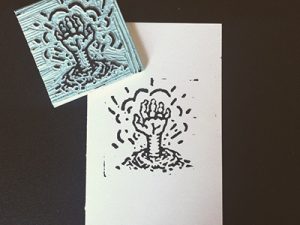In the vast realm of printing techniques, relief printing stands out as a distinctive and captivating art form. Its rich history, unique process, and artistic outcomes set it apart from other printing methods. In this blog post, we will delve into the intricacies of relief printing and explore its differences from other printing processes, shedding light on its artistic significance and practical applications.
- Understanding Relief Printing:
Relief printing is a traditional printmaking technique that involves carving a design onto a surface, applying ink to the raised areas, and transferring the image onto paper or another substrate. The key characteristic of relief printing is the raised surface, which creates a distinct impression when inked and pressed onto the printing medium. - Relief Printing vs. Intaglio Printing:
One of the primary distinctions of relief printing is its opposite approach to intaglio printing. While relief printing involves carving the design on a raised surface, intaglio printing involves incising the design into a sunken surface. This fundamental difference in technique results in contrasting visual effects and artistic possibilities. - Relief Printing vs. Lithography:
Relief printing also differs significantly from lithography, another popular printing process. Lithography relies on the principle of oil and water repulsion, whereas relief printing relies on the physical relief of the surface. This distinction affects the way ink is applied and transferred, leading to variations in texture, line quality, and overall aesthetic appeal. - Relief Printing and Flexography:
Flexography, commonly used in commercial printing, shares some similarities with relief printing. Both techniques involve raised surfaces to transfer ink onto the printing medium. However, relief printing typically employs manual or hand-operated presses, while flexography utilizes mechanized systems. Additionally, relief printing often emphasizes artistic expression, while flexography prioritizes efficiency and mass production. - Artistic Significance of Relief Printing:
Relief printing offers a unique artistic experience, allowing artists to explore texture, depth, and expressive mark-making. The physicality of carving the design and the tactile quality of the resulting print contribute to the distinct charm of relief prints. Artists can experiment with various materials, such as wood, linoleum, or even unconventional objects, to create visually captivating and emotionally evocative prints.
Conclusion:
Relief printing stands out as a captivating and versatile printing technique, offering artists and printmakers a distinctive way to express their creativity. Its differences from other printing processes, such as intaglio, lithography, and flexography, lie in the approach, materials, and artistic outcomes. By understanding the unique qualities of relief printing, artists can unlock a world of artistic possibilities and create visually stunning prints that leave a lasting impression.




+ There are no comments
Add yours